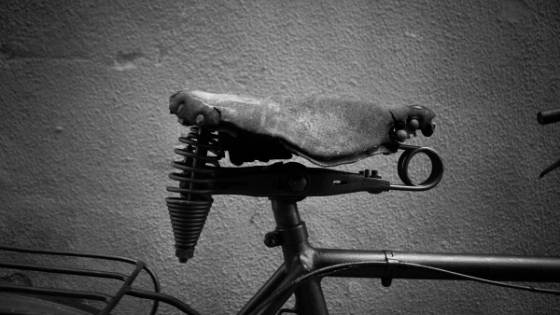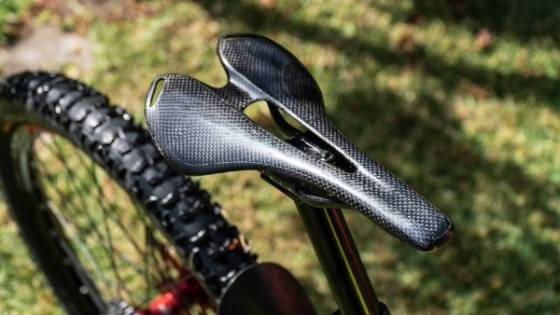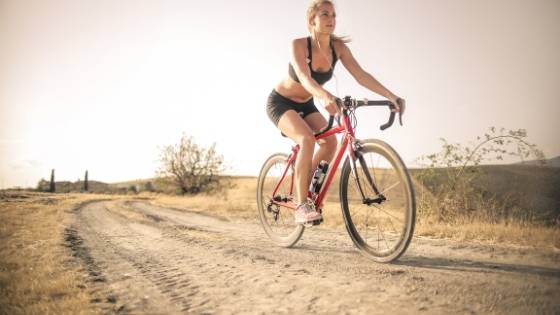
Saddle soreness, irritation, and pain in the groin and backside are among the most annoying things about road biking. It can make it unpleasant to cycle for longer periods, and you wake up the next day with a sore bum and lower back pain.
So why does it occur? Are road bikes seats designed to be uncomfortable, and how do we prevent it from happening?
Road bike saddles are designed to be firm and hard, increasing contact with your sit bones and not the riders’ entire weight. The saddle shape provides unrestricted leg movement when cycling. The firm seat can feel uncomfortable and hurt at first, but a softer, more cushioned seat is worse for your bum and lower back.
Your road bike seat may hurt for a few reasons. It may be adjusted poorly, the wrong shape, or simply that you’re wearing the wrong shorts to sit on it. Solving these issues can give you a smoother, more comfortable ride.
Here are the biggest reasons your road bike seat might feel uncomfortable, why they hurt, and how to solve them.
Table of Contents
1. The Seat Height And Position Is Incorrect
Your bicycle seat is adjustable to match your height and accommodate for the distance between you and the handlebars.
Having the height adjusted incorrectly can mean that your weight is poorly distributed across the seat, leading to soreness.
Ideally, your sit bones (ischial tuberosity) should make contact with your bike seat. If your bum overhangs the saddle, your sit bones are positioned wrongly, making this the biggest cause why your getting saddle soreness.
Therefore, a firm hard seat is better for making contact with your sit bones. A soft cushioned seat allows more movement in your hips, reducing the comfort of the ride. The best way to combat this is to bring your bike to a professional to have it fitted correctly.
This can be done at most professional bike shops and doesn’t take very long. You can also check your bike at home, as long as you know the proper measurements for your height and position of the sit bones on the saddle.
You should check the fit occasionally to make sure the seat hasn’t moved and that you’re still able to sit comfortably.

2. Your Saddle Is The Wrong Shape
Bike saddles come in a wide variety of shapes and sizes. The standard, single-nose shape may be uncomfortable for some riders, and extra padding may actually make sitting more uncomfortable for some.
For this reason, it’s a good idea to test out a few different designs.
- Flat Saddles: there is no raised or lower areas along the entire saddle. These saddles are great for upright riders who are very flexible or a rider that likes to lean forward.
- Waved Saddles: they have a raised part at the back and slope down in the middle. Ideal for riders that sit in one position for a longer distance.
- Curved Saddle: both ends of the saddle are curved lowers than the middle of the seat. They are designed for the cyclist with wider hips or bum.
- T-Shaped Saddle: generally the most common type of saddle as it gives both comfort and good riding position. The t-shape allows more room for leg movement, preventing thigh rub. The saddle supports the sit bones.
You can find a good variety at your local bike shop, but you should consider looking online for speciality designs if you don’t see anything you like there. Try them for a few rides, and adjust according to your needs.
3. You’re Wearing The Wrong Bike Shorts
Sometimes, your seat hurting has nothing to do with the seat itself and everything to do with the fact that you aren’t wearing proper bike shorts.
The wrong shorts can be stifling and cut incorrectly. Appropriate shorts are well-padded, cut properly, and made of high-quality materials that allow air to move freely to prevent irritation. If you ride your bike frequently, invest in a few good pairs of bike shorts.
Cheaper options may not meet the standards of support and may lead to a higher risk of soreness, irritation, or even infection when worn for extended periods of time. A good amount of padding within the shorts is all you need to remove saddle soreness.

4. Not Enough Time In The Saddle
When you’re new to cycling or buying a new road bike, you might be put off by the discomfort your feeling after your ride.
The best way to get over saddle soreness is to keep riding. The less time you spend on the bike, the more it’s going to hurt next time. However, if you ride every day or 3/4 times a week, the soreness will soon disappear.
I find saddle soreness fades after two or three days because my bum and back get used to the firm seat. Although if I’ve been on a long ride spending hours in the saddle the next day, it hurts. I hop back on the bike for a short recovery ride, it also helps build time in the saddle for next time.
5. Sitting In The Saddle For Too Long
The most obvious reason your bum hurts when cycling your road bike is your sitting in the saddle too long. To prevent soreness, periodically stand up for 10 minutes during your ride.
The standing position takes the pressure away from your lower back and bum, giving them a well-earned rest. Furthermore, standing builds more leg muscles and strengthens your core. You can generate more power when standing, and it is easier to cycle uphills.
If you are seated for most of your ride, you need to either put more power into your ride or try different routes that include hills and challenging terrain.
Finally
Everyone is different, so every bike is different. Make sure that yours is tailored to your needs by checking the fit of the seat height and handlebars, finding a saddle size and shape that works for your body, and wearing the proper equipment for long road rides.
By doing this, you can make sure you’re able to ride without pain for a long time to come.



